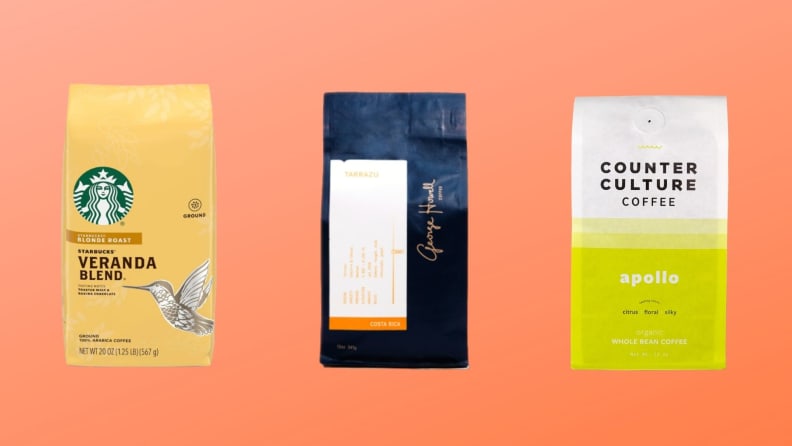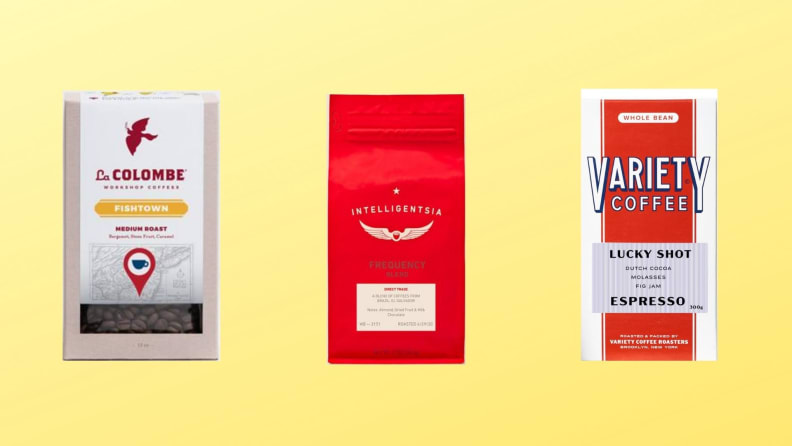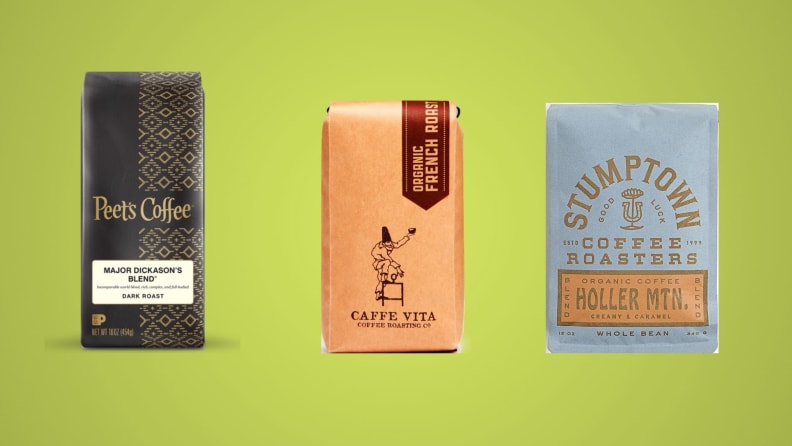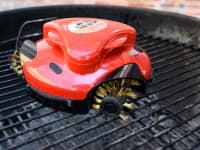Everything you need to know about coffee roasts
Get the lowdown on light, medium, and dark roast beans.
Products are chosen independently by our editors. Purchases made through our links may earn us a commission.
If you’ve ever been left speechless when a barista asks, “Light or dark roast?” or felt baffled when browsing the coffee section at your local grocery store, you’re not alone. As coffee lovers, we've got a lot of choices when it comes to our beans.
And as an experienced coffee roaster, I think it's important to start with the basics: beans and roasting. Learning more about the roasting process can help you hone your coffee preferences and help you choose the right coffee beans for your palate. You might even find that your roast preference changes with the seasons, time of day, or with your mood!
What is coffee roasting?
During coffee roasting, heat is carefully added to raw coffee beans resulting in chemical, physical, and sensorial changes. The coffee starts as “green coffee,” which is rock-hard and very small. After about 8 to 15 minutes of roasting, the beans lose density and water weight, developing hundreds of aromatic compounds and caramelized sugars.
Commercial coffee roasters center around a spinning drum that's heated by a burner, which is controlled by the roaster, the person behind this whole operation. The roaster controls how much heat the roast starts out with, and at what times to add or remove gas from the burner in order to achieve the desired results.
The beginning of the roast—called the drying phase—is when the water stored within the coffee beans evaporates. The marked end of this phase is when the coffee turns bright yellow, signifying the Maillard reaction, the chemical reaction between amino acids and sugar. At this point, the coffee also begins to smell like toasted cereal.
Next, the most important physical change happens—this is called first crack. At this point, the coffee sounds like popping popcorn, and is actually going through a similar process, as steam pressure has built up inside the bean and literally “pops” it. First crack is also when the coffee loses density and the aromatics begin to form.
The time between first crack and the end of the roast is called the development time. At this point, the roaster is focused on developing the sweetness and depth of the coffee while continuously taking heat away from the burner. Making a mistake during roasting, especially during development, could result in unpleasant baked or cardboard-like flavors.
Roasting time depends on whether the roaster is looking for a light, medium, or dark roast profile.
What is a light roast?

Light roast coffee is typically more delicate in flavor than medium or dark roast.
Light roast coffee is coffee that's roasted at a lower temperature, and usually takes a shorter amount of time than darker roasts. The goal of light-roasting coffee is to highlight the nuanced tasting notes, rather than overpowering them with traditional roasty flavor. Light roasting tends to result in a flavor that’s more fruity, floral, and bright than medium and dark roasted coffees.
If you’re really into drinking your coffee with milk, light-roasted coffee might not be for you, as its delicate flavors can sometimes get lost in milk and sugar. Light roasts have become very popular recently, from Starbucks to many small, origin-focused roasters in cities across the country. Check out some of our picks for light roast coffees below:
- Beginner: Starbucks Veranda Blonde (available on Amazon for $9.97)
- Intermediate: George Howell Tarrazu (available at Trade for $16.50)
- Advanced: Counter Culture Apollo (available at Target for $12.99)
What is a medium roast?

Medium roast coffee is a crowd-pleaser, perfect for adding milk and sugar.
Medium roast coffee is roasted longer and to a higher temperature than light roasts, but not as long and high as dark roasts. These roasts are sometimes referred to as “city roast” or “city plus." Medium roasts tend to be very versatile, and are great crowd pleasers.
Medium roasts still taste complex and delicious served black, but can also stand up to milk and sugar, which makes them great for entertaining a crowd. We also recommend medium roast beans for making home-brewed iced coffee. Check out some of our favorite medium roasted coffees below:
- Beginner: La Colombe Fishtown (available at La Colombe for $15)
- Intermediate: Intelligentsia Frequency Blend (available on Amazon for $13.73)
- Advanced: Variety Lucky Shot (available at Variety Coffee Roasters for $15)
What is a dark roast?

Dark roast coffee is often referred to by any of the following monikers: “full city,” “Italian roast,” or “French roast."
Dark roast coffee is roasted longer and to a higher temperature than light and medium roasted coffee. It can be distinguished visually by its dark brown to black color, and sometimes oily coating. Dark roast coffee also has the most aliases, often referred to as “full city,” “Italian roast,” or “French roast."
Dark roast coffee can be characterized by its bold, roasty flavor, which may be your favorite if you prefer strong-tasting coffee or coffee that really cuts through milk and sugar. Check out some of our top picks for dark roasted coffee:
- Beginner: Peet’s Major Dickason’s Blend (available at Peet's Coffee for $16.95)
- Intermediate: Caffe Vita French Roast (available at Trade for $17.35)
- Advanced: Stumptown Holler Mountain (available on Amazon for $11.55)
What is espresso roast coffee?
A common belief is that an “espresso roast” uses a different type of bean or roast style completely. In fact, any coffee beans roasted any way can be used to make espresso! Most coffee professionals agree that medium and dark roasts are better suited for pulling shots, but many enthusiasts enjoy using light roasts for espresso, too.
Which coffee roast has the most caffeine?
Baristas and coffee-lovers often argue over what type of roast has more caffeine, but the truth is, the differences between caffeine content in various coffee roasts is negligible. Choose your favorite based on flavor, not on caffeination!


